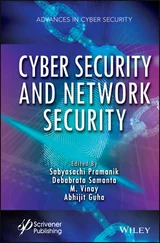■ —vssFullSpecifies that you want to perform a full backup by using VSS, which ensures that all server and application data is backed up. Do not use this parameter if you are using a third-party backup utility to back up application data.
To understand how START BACKUP is used, consider the following examples:
Performing a full backup of the server
wbadmin start backup -backupTarget: f: -vssfull
Backing up C and D to F
wbadmin start backup -backupTarget: f: -include: c:,d:
Backing up all critical volumes
wbadmin start backup -backupTarget: f: -allCritical
Backing up C and D to a remote shared folder
wbadmin start backup -backupTarget: \\fileserver27\backups -include: c:,d:
-user: williams
If you want to create a schedule to run backups at different times on different days, you can use Task Scheduler to create the necessary tasks to run this command on the schedule you set. You can use Task Scheduler and Wbadmin to schedule tasks to run backups by following these steps:
1.In Computer Management, tap or click Task Scheduler. You are connected to the local computer by default. As necessary, connect to the computer that you want to access.
2.Press and hold or right-click the Task Scheduler node, and then tap or click Create Task. This opens the Create Task dialog box.
3.On the General tab, enter the name of the task, and then set security options for running the task.
■If the task should run under a user other than the current user, tap or click Change User Or Group. In the Select User Or Group dialog box, select the user or group under which the task should run, and then provide the appropriate credentials when prompted later.
■Set other run options as necessary. By default, tasks run only when a user is logged on. If you want to run the task regardless of whether a user is logged on, select Run Whether User Is Logged On Or Not. You can also elect to run with highest privileges and configure the task for earlier releases of Windows.
4.On the Triggers tab, tap or click New. In the New Trigger dialog box, select On A Schedule in the Begin The Task list. Use the options provided to set the run schedule, and then tap or click OK.
5.On the Actions tab, tap or click New. In the New Action dialog box, select Start A Program in the Action list.
6.In the Program/Script text box, enter %windir%\System32\wbadmin.exe.
7.In Add Arguments, enter the START BACKUP command you want to use along with its parameters, such as the following:
start backup -backupTarget: f: —-nclude: c:,d:,e: \mountpoint,\\?\volume{be345a23-32b2-432d-43d2-7867ff3e3432}\
8.Tap or click OK to close the New Action dialog box.
9.On the Conditions tab, specify any limiting conditions for starting or stopping the task.
10.On the Settings tab, choose any additional optional settings for the task.
11.Tap or click OK to create the task.
You can use Windows Server Backup to back up servers manually by following these steps:
1.Start Windows Server Backup. Tap or click Backup Once on the Action menu or in the Actions pane to start the Backup Once Wizard.
2.If you want to back up the server by using the same options you use for the Backup Schedule Wizard, select Scheduled Backup Options, tap or click Next, and then tap or click Backup to perform the backup. Skip the remaining steps.
3.If you want to back up the server by using different options, select Different Options, and then tap or click Next.
4.On the Select Backup Configuration page, note the backup size listed under the Full Server option. This is the storage space required to back up the server data, applications, and the system state. To back up all volumes on the server, select the Full Server option, and then tap or click Next. To back up selected volumes on the server, tap or click Custom, and then tap or click Next.
5.If you select Custom, the Select Items For Backup page is displayed. Tap or click Add Items. Select the check boxes for the volumes you want to back up, and clear the check boxes for the volumes you want to exclude. Select the Bare Metal Recovery option if you want to be able to fully recover the operating system. Tap or click OK, and then tap or click Next.
TIP After you select items, you might want to tap or click Advanced Settings before continuing. You can then use the options on the exclusions tab to identify locations and file types that should not be backed up. You also can then use the options on the VSS Settings tab to specify whether you want to create a full backup or a copy backup.
6.On the Specify Destination Type page, do one of the following:
■If you want to back up to local drives, select Local Drives, and then tap or click Next. On the Backup Destination page, select the internal or external disk or DVD drive to use as the backup target. When stored on a DVD, backups are compressed and you can recover only full volumes. As a result, the size of the backup on a DVD might be smaller than the volume on the server. Tap or click Next.
■If you want to back up to a remote shared folder, select Remote Shared Folder, and then tap or click Next. On the Specify Remote Folder page, enter the UNC path to the remote folder, such as \\FileServer43\Backups.
■If you want the backup to be accessible to everyone who has access to the shared folder, select Inherit under Access Control. If you want to restrict access to the shared folder to the current user, administrators, and backup operators, select Do Not Inherit under Access Control. Tap or click Next. When prompted to provide access credentials, enter the user name and password for an account authorized to access and write to the shared folder.
7.Tap or click Next, and then tap or click Backup. The Backup Progress dialog box shows you the progress of the backup process. If you tap or click Close, the backup will continue to run in the background.
Recovering your server from hardware or startup failure
Windows Server 2012 R2 includes an extensive diagnostics and resolution architecture. These features can help you recover from many types of hardware, memory, and performance issues and either resolve them automatically or help users through the process of resolving them.
Windows Server 2012 R2 includes more reliable and better-performing device drivers to prevent many common causes of hangs and crashes. Improved I/O cancellation for device drivers ensures that the operating system can recover gracefully from blocking calls and that there are fewer blocking disk I/O operations.
To reduce downtime and restarts required for application installations and updates, Windows Server 2012 R2 can use the update process to mark in-use files for update, and then automatically replace the files the next time the application is started. In some cases, Windows Server 2012 R2 can save the application’s data, close the application, update the in-use files, and then restart the application. To improve overall system performance and responsiveness, Windows Server 2012 R2 uses memory efficiently, provides ordered execution for groups of threads, and provides several process-scheduling mechanisms. By optimizing memory and process usage, Windows Server 2012 R2 ensures that background processes have less performance impact on system performance.
Читать дальше






